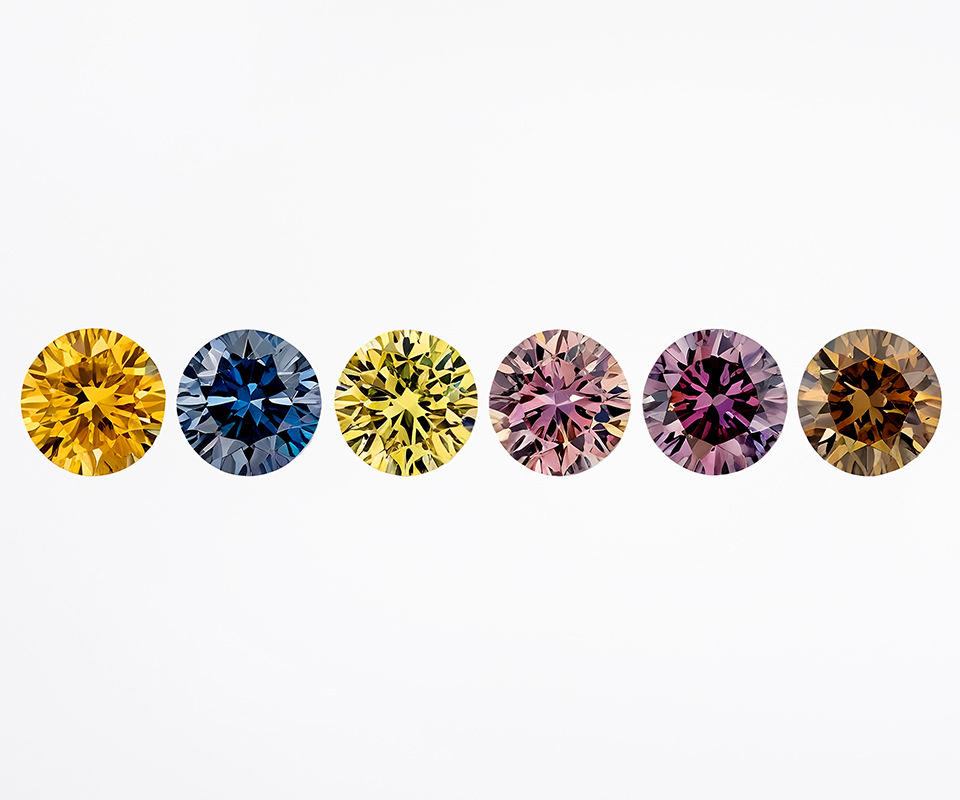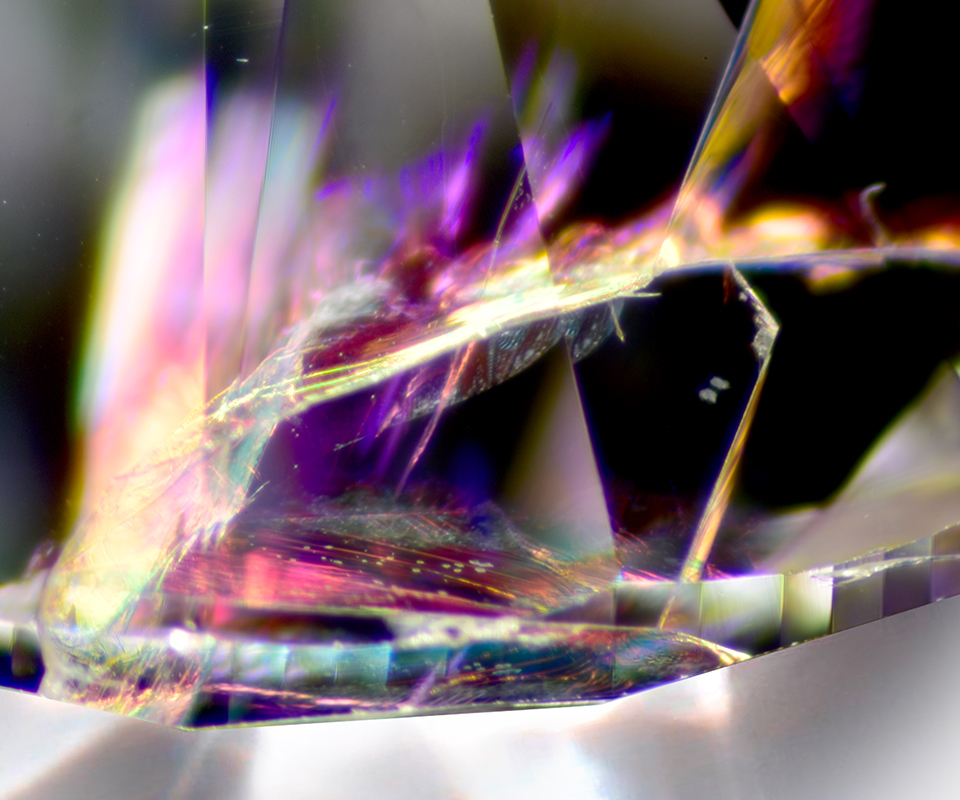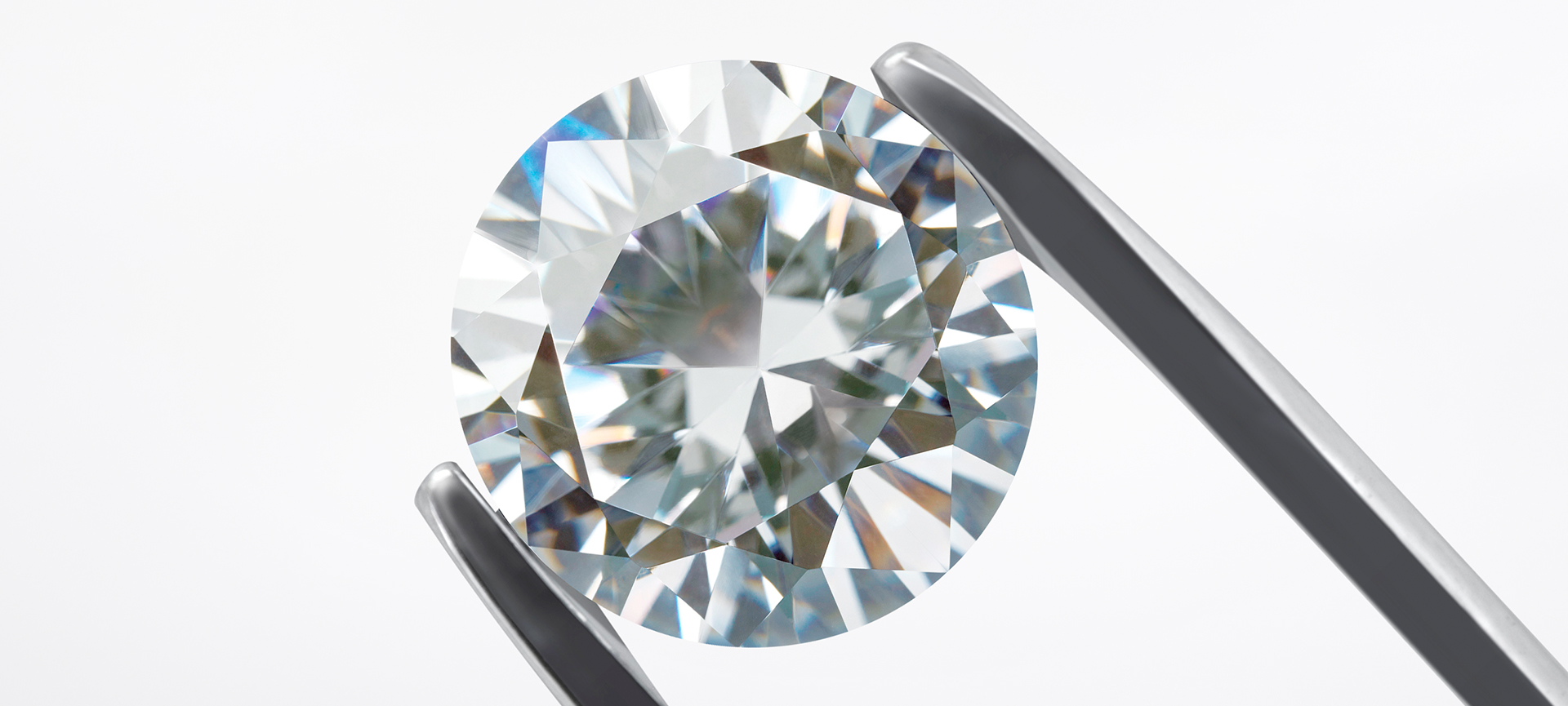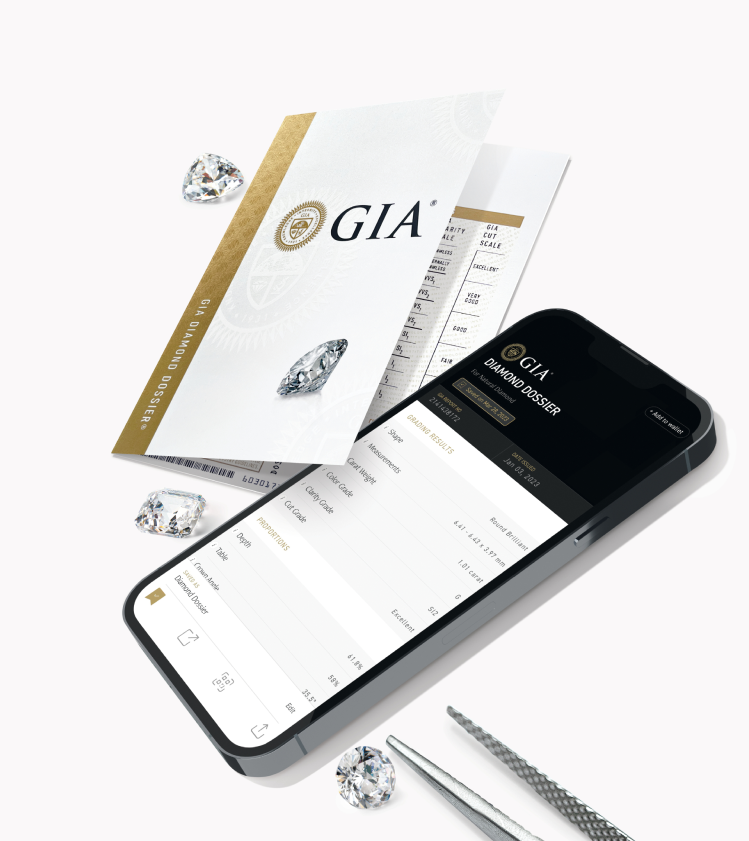Understanding diamond treatments.
Understanding diamond treatments.
Advanced testing for treatments.
There are several ways that diamonds can be treated to enhance or remove their color and improve their clarity. As diamond science advances, so does the sophistication of the treatments, potentially making them harder to detect without the advanced testing conducted at a reputable gemological laboratory. Every GIA diamond grading report lists the presence of any known diamond treatments.
GIA reports for treated diamonds.
We only issue reports for treated diamonds with stable treatments such as diamond irradiation, annealing, laser drilling or high-pressure, high-temperature (HPHT) treatments. As a further precaution, we laser-inscribe the girdles of diamonds identified as color-treated. All GIA reports designate a diamond’s color as natural color or treated color.
We do not issue grading reports for diamonds that have received nonpermanent or unstable treatments such as diamond coating or fracture filling.


GIA reports for treated diamonds.
We only issue reports for treated diamonds with stable treatments such as diamond irradiation, annealing, laser drilling or high-pressure, high-temperature (HPHT) treatments. As a further precaution, we laser-inscribe the girdles of diamonds identified as color-treated. All GIA reports designate a diamond’s color as natural color or treated color.
We do not issue grading reports for diamonds that have received nonpermanent or unstable treatments such as diamond coating or fracture filling.

Color treatments.
Diamond Coating: An ultra-thin layer of foreign material covering a diamond to mask the original color and enhance or introduce an attractive color. Coatings will scratch and wear off over time and can be damaged by heat and/or chemicals. Coatings are not permanent, therefore GIA will not issue a report for a coated diamond.
Diamond Irradiation: Irradiation, most commonly by high-energy electrons, is used to produce different colors in diamonds. The process can be followed by annealing to further enhance diamond color. Irradiated diamonds may be more sensitive to the heat involved in repair procedures. These treatments are stable to regular wear so GIA will issue reports for irradiated diamonds.
Diamond Annealing: A controlled heating and cooling process used to adjust a diamond’s color. The final color is dependent on the starting material and which atomic defects are present in the stone. The process is very common for creating black diamonds. In fact, most black diamonds are treated. Since annealing is a stable treatment, GIA will grade annealed diamonds.
Diamond High-Pressure, High-Temperature Treatment: A method of annealing to alter color at high pressures and temperatures using a press. Under different conditions, this type of press, commonly referred to as an HPHT press/system/instrument, can be used to either alter the color of diamonds or grow diamond. Often used to turn brownish diamonds into yellow or green, this form of diamond treatment is stable. GIA will grade HPHT-treated diamonds.
Color treatments.
Diamond Coating: An ultra-thin layer of foreign material covering a diamond to mask the original color and enhance or introduce an attractive color. Coatings will scratch and wear off over time and can be damaged by heat and/or chemicals. Coatings are not permanent, therefore GIA will not issue a report for a coated diamond.
Diamond Irradiation: Irradiation, most commonly by high-energy electrons, is used to produce different colors in diamonds. The process can be followed by annealing to further enhance diamond color. Irradiated diamonds may be more sensitive to the heat involved in repair procedures. These treatments are stable to regular wear so GIA will issue reports for irradiated diamonds.
Diamond Annealing: A controlled heating and cooling process used to adjust a diamond’s color. The final color is dependent on the starting material and which atomic defects are present in the stone. The process is very common for creating black diamonds. In fact, most black diamonds are treated. Since annealing is a stable treatment, GIA will grade annealed diamonds.
Diamond High-Pressure, High-Temperature Treatment: A method of annealing to alter color at high pressures and temperatures using a press. Under different conditions, this type of press, commonly referred to as an HPHT press/system/instrument, can be used to either alter the color of diamonds or grow diamond. Often used to turn brownish diamonds into yellow or green, this form of diamond treatment is stable. GIA will grade HPHT-treated diamonds.

Clarity treatments.
Diamond Laser Drilling: A laser bores tiny holes into a diamond’s interior, creating channels through which a bleaching agent can be introduced to remove small, dark inclusions. Drill holes are considered a clarity characteristic. Since this is a permanent treatment, GIA diamond grading reports will always mark laser drill holes in the inclusions plot. However, sometimes drill holes are fracture-filled, and GIA will not grade diamonds containing a foreign substance.
*Note: internal laser drilling can also be used to alter inclusions. This method opens a “feather” or cleavage to the surface of the diamond, which can resemble natural feathers within a diamond and can be harder to detect.
Diamond Fracture Filling: A molten lead glass-like substance used to fill feathers or white fractures in a diamond to enhance clarity. With proper care, these treatments can repair cracked diamonds and last for years, but it is not considered a permanent or stable treatment. Fracture filling can also negatively alter the color of a diamond. Common repairs and cleaning with steam, acid or ultrasonic solutions can damage the filling. If the filler turns dark, it cannot be made colorless again. Fracture filling can make a diamond appear clearer and can be very hard to detect. GIA does not grade diamonds that have been fracture-filled.


Clarity treatments.
Diamond Laser Drilling: A laser bores tiny holes into a diamond’s interior, creating channels through which a bleaching agent can be introduced to remove small, dark inclusions. Drill holes are considered a clarity characteristic. Since this is a permanent treatment, GIA diamond grading reports will always mark laser drill holes in the inclusions plot. However, sometimes drill holes are fracture-filled, and GIA will not grade diamonds containing a foreign substance.
*Note: internal laser drilling can also be used to alter inclusions. This method opens a “feather” or cleavage to the surface of the diamond, which can resemble natural feathers within a diamond and can be harder to detect.
Diamond Fracture Filling: A molten lead glass-like substance used to fill feathers or white fractures in a diamond to enhance clarity. With proper care, these treatments can repair cracked diamonds and last for years, but it is not considered a permanent or stable treatment. Fracture filling can also negatively alter the color of a diamond. Common repairs and cleaning with steam, acid or ultrasonic solutions can damage the filling. If the filler turns dark, it cannot be made colorless again. Fracture filling can make a diamond appear clearer and can be very hard to detect. GIA does not grade diamonds that have been fracture-filled.
Buying a treated diamond.
If treated, it is important to know which treatment your diamond has experienced to best understand its value and how to properly care for it. Wholesalers and retailers are required to disclose the presence of treatments, but the best way to be absolutely sure is to choose a diamond with a GIA report.

Expertise at your fingertips.
You don’t need to be a gemologist to purchase a diamond with confidence. You just need to know where to find one.
GIA is the trusted benchmark for diamond grading. Download the GIA App now to learn more about the 4Cs and look up GIA reports.


Expertise at your fingertips.
You don’t need to be a gemologist to purchase a diamond with confidence. You just need to know where to find one.
GIA is the trusted benchmark for diamond grading. Download the GIA App now to learn more about the 4Cs and look up GIA reports.
Expertise at your
fingertips.
You don’t need to be a gemologist to purchase a diamond with confidence. You just need to know where to find one.
GIA is the trusted benchmark for diamond grading. Download the GIA App now to learn more about the 4Cs and look up GIA reports.
GIA Report Check
Access your GIA Grading Report results using your GIA report number.